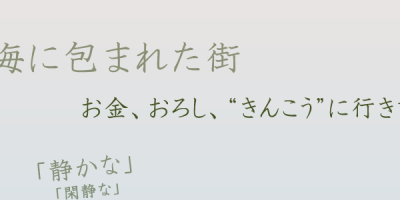
In Japanese, turtleneck and high-neck clothes are called “tokkuri” (bottlenecks) by “adults.” “Adults” also use “yoo suru ni” in place of “kekkyoku”. Or “hikkyou(1).” They even babble phrases such as “Seezon kampu kyuufukin tsuki no shuushin iryoo hoken ga….” (About my lifetime health insurance with subsistence pension…); a “child” can do none of these things. “Adults” have a monopoly on the use of out of fashion, old fashion and tedious language. This is because, “adults” are by nature inclined to (or must) use out of fashion, old fashion or tedious language.
In fact, polite language that shows concern for others, such as “you look after yourself too,” are also “adult” patterns (Part 22). This is because “adults” are naturally concerned for others. These facts do not merit being stated; they belong to the realm of the ordinary.
However, this sort of explanation offered by “common linguistics,” that “naturally ‘adults’ use this sort of language because they are thus and so” cannot completely address “adult” speech. We have already partially seen this.
For example, unlike “fuun,” and “hee,” “haa” and “hoo” are used in “adult” speech (Part 23). There is no prospect of building a common-sense explanation of this fact based on the argument that “naturally ‘adults’ are thus and so.”
A further example is that “ara” when said with a falling, as opposed to a rising, intonation is the sort of speech used by a “madam,” which is a certain kind of “adult”(Part 26). This fact cannot be completely explained by any common-sense “adult” theory or “madam” theory.
When someone chops up a list with the conjunction “to” (and), for example “Tanaka-san too, Sato-san too, Suzuki-san too, Yamada-san…” (Tanaka-san and Sato-san and…), instead of saying, “Tanaka-san, Sato-san, Suzuki-san, Yamada-san…” it sounds “childish” (especially when the “leap-and-fall” intonation (Part 14) is used, and the syllable “to” is given a particularly high intonation, while the “-o” is lowered). This phenomenon appears to be open to the simple common-sense explanation that “children” tend to begin speaking before thinking over what they are going to say, and have to think as they speak. This explanation seems even more certain if one considers that in English too, saying “A, and B, and C, and D…” instead of “A, B, C, D, …” is considered childish.
However, we mustn’t forget spoken expressions such as “Rusu no aida ni Tanaka-san dakke, hito ga kita yo” (While you were away, someone —Tanaka was it?— came by) and “Otoko no hito ga hachi-nin datta ka, nimotsu wo todoke ni kita” (Some men … about 8?… delivered the items). Starting to speak before being able to remember certain information—what was the name of the person who came while you were away? how many men delivered the items?—and thinking while speaking is a pattern used by “adults” not “children.”
Beginning to speak before thinking over what one is going to say is not only the act of an unskilled “child,” but also of an unworried, lax “adult.” In terms of structure, the two differ in that the “child” displays this phenomenon in parallel structures—“Tanaka-san, and Sato-san, and Suzuki-san, and Yamada-san…”—while with the “adult” it appears in parenthetical structures—“Tanaka was it?” and “About 8?”
Furthermore, while “children” don’t use parenthetical structures, such as “While you were away, someone—Tanaka was it?—came by,” it isn’t uncommon for them to laxly say, while lolling around at home for example, “Maada tabetenuai nodaaa” (I haaaaven’t eeeeeaten yet). So there are various types of laxness. On the other hand, in parallel structures such as “Tanaka-san, too Sato-san, too…” too, children don’t say “Tanaka-san to da, Sato-san to da…” (this is an “adult” pattern, one used specifically by the “middle aged man”). This problem cannot be addressed by the common-sense explanation that “children” tend to begin speaking before sufficiently thinking over what they are going to say.
It is necessary to go beyond common sense and re-question what are parallel structures, what are parallel structures with an appended “da,” what are parenthetical structures, how are they “lax,” how is this “laxness” different from sentences like “Maada tabetenuai nodaaa,” and what do we mean by “child” character and “adult” character? The deepening of the mutual understanding between structure and character on the “common sense” level by extracting clues from language usage is indeed the entire point of our research.
* * *









(1) “Yoo suru ni,” “kekkyoku,” and “hikkyou” all essentially mean “in short” or “in the end.”